Barred Owl
Strix varia
Like other owls, the barred owl swallows its prey whole.
Advertisement
Barred Owl Scientific Classification
- Kingdom
- Animalia
- Phylum
- Chordata
- Class
- Aves
- Order
- Strigiformes
- Family
- Strigidae
- Genus
- Strix
- Scientific Name
- Strix varia
Read our Complete Guide to Classification of Animals.
Barred Owl Conservation Status
Barred Owl Facts
- Prey
- Mammals, including house mice and rabbits, other birds, amphibians, reptiles, insects and other invertebrates and even fish.
- Fun Fact
- Like other owls, the barred owl swallows its prey whole.
- Estimated Population Size
- 3 million and increasing
- Biggest Threat
- Great horned owl
- Most Distinctive Feature
- Its facial disk and huge eyes.
- Other Name(s)
- Striped Owl, Northern Barred Owl, Hoot Owl, Ol’ Eight-Hooter
- Wingspan
- 42.13 to 43.7 inches
- Incubation Period
- 28 to 33 days
- Litter Size
- Two to three
- Habitat
- Forests, especially old growth forests near bodies of water, wooded swamps
- Predators
- Raccoons and weasels, great horned owls, humans
- Diet
- Carnivore
- Type
- Bird
- Common Name
- Barred owl
- Number Of Species
- 3
- Location
- North America
- Average Clutch Size
- 3
- Nesting Location
- Tree cavities, larger abandoned nests, squirrel drays. Barred owls may also choose a nest box.
- Age of Molting
- Four to five weeks
View all of the Barred Owl images!
“The Barred Owl is a noisy owl and a silent hunter.”
The barred owl is known for the repertoire of sounds it makes and for its consummate skill as a hunter. It uses the accuracy of its huge eyes and asymmetrical ears to pinpoint the location of even a tiny animal on the forest floor. Yet, these birds of prey seem curious about humans. Some find them almost tame.
Barred Owl Amazing Facts
- The flight of the barred owl is nearly soundless. This is because each feather is unusually soft and each primary feather has a comb-like edge that dampens the sound while the bird is in flight.
- They are famous for their main call, which sounds like “hoo hoo hoo hoo — hoo hoo hoo hoo-ah.” The barred owl, indeed, has a repertoire of calls and hoots including screams, cackles, hisses, rasps, and what sounds like sinister laughter. The male’s voice is deeper than the female’s.
- The barred owl is a big owl, but the great horned owl is even bigger and will even prey upon adults.
- The owl’s ears are at different heights on its head. This allows them to pinpoint the location of prey. On top of this, the feathers around the facial disk funnel sound into the ears.
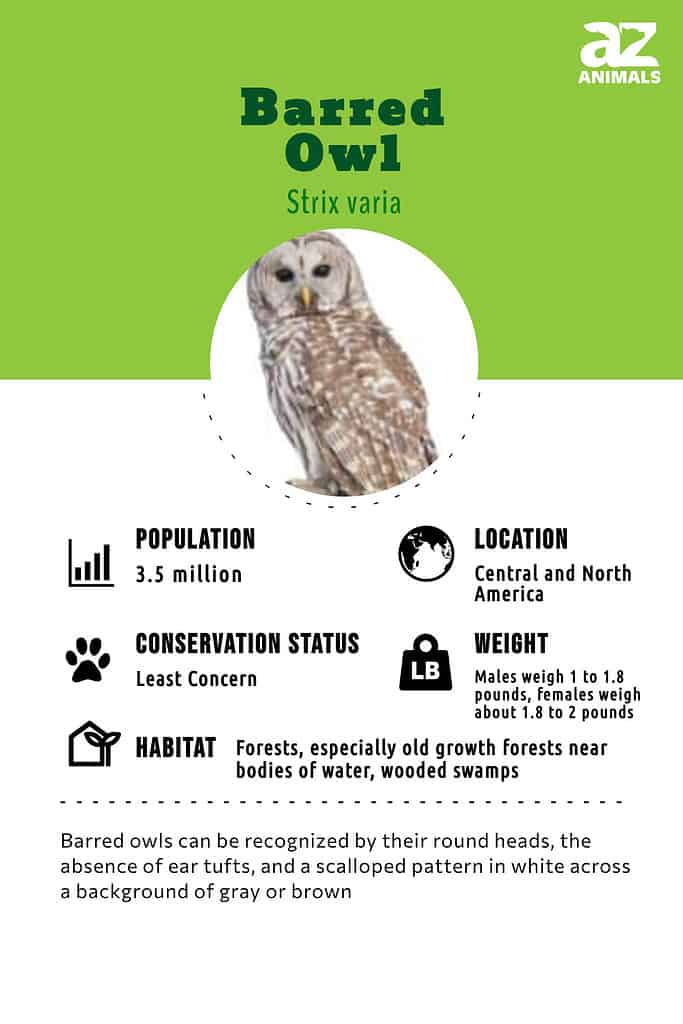
Where To Find the Barred Owl
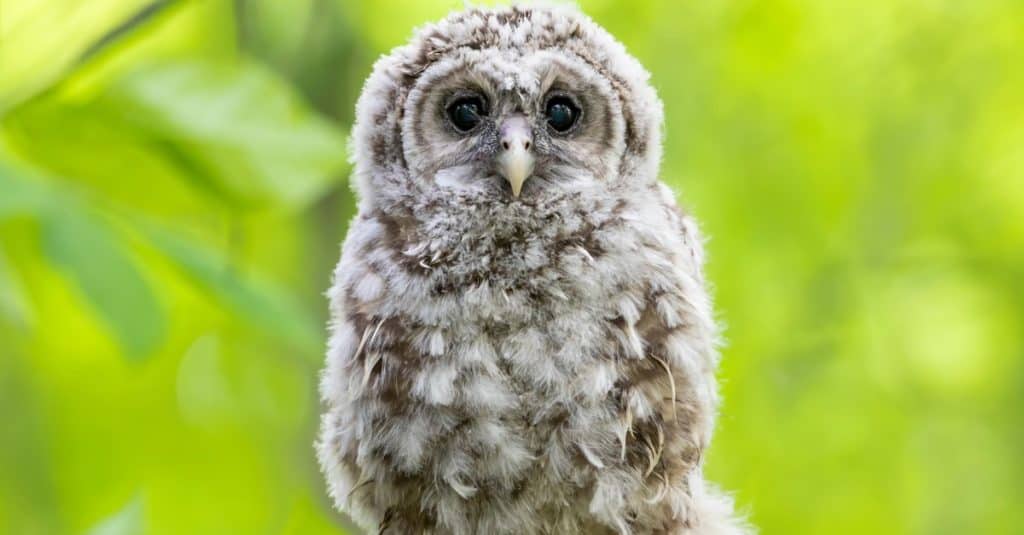
Barred owls are increasingly being seen in urban areas owing to the abundance of rodents and bird life in such environments
©Jim Cumming/Shutterstock.com
The barred owl is found in forests in the eastern part of the United States and southeastern Canada, with populations in the Pacific Northwest. There’s also a population on the west coast of Mexico. Though it’s a large bird, it can be challenging to find, especially during the winter in deciduous forests where its coloring allows it to blend into the branches of the trees. However, barred owls are more and more seen in suburbs. This may be due to the population of rodents, including rats, mice, and squirrels, smaller birds such as wrens and house sparrows, and trees that have grown big and strong enough for the bird to have its nest in them. So a suburban homeowner shouldn’t be surprised to see a barred owl right outside their house.
On the other hand, barred owls are said to be curious about human beings. Despite the hair-raising sounds they can make, they are rather docile. When looking for one in the woods during the day, look up into the trees at places where a branch that’s at last 16 feet up is close to the trunk. The owl also spends much of the day in tree hollows.
Barred Owl Nests
As a large bird, the barred owl needs a lot of space for a nest and prefers to have it in cavities in large, old trees, especially elms and beeches. Yet they’ll use the nests of squirrels or other birds if no cavities are available or a nest box. They don’t construct nests the way some other birds do but may tidy the floor of the area before the female lays eggs.
Scientific Name
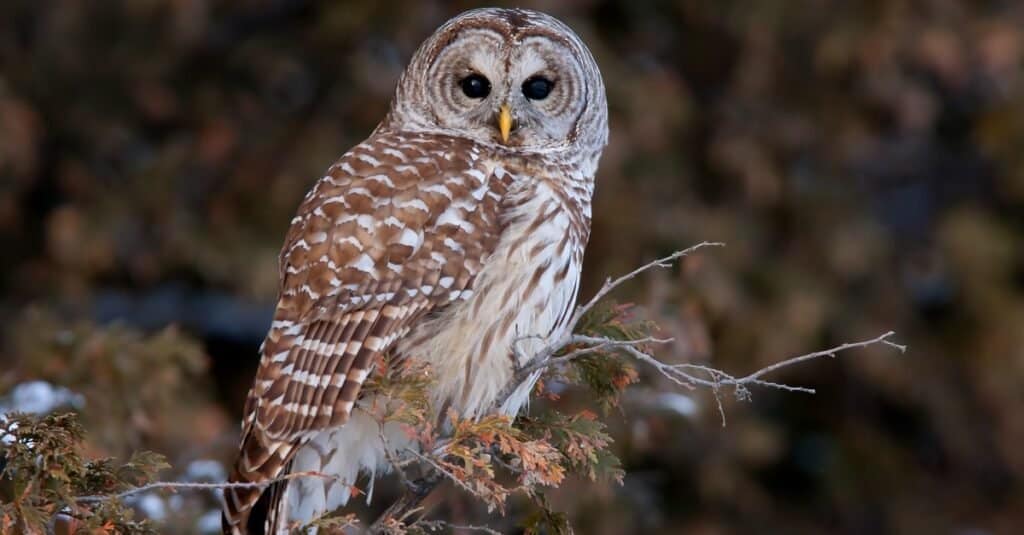
Barred owls are named for their striped, variegated plumage
©Jim Cumming/Shutterstock.com
The scientific name of the barred owl is Strix varia. The name comes from the Latin name of an owl monster vampire that drinks the blood of babies. Varia probably points to the owl’s striped, variegated plumage.
Appearance

Barred Owls lack the ear tufts of their arch enemies, great horned owls
©cindylindowphotography/Shutterstock.com
The barred owl has a round head that lacks the ear tufts of its nemesis, the great horned owl. Its breast is horizontally striped in brownish-gray while its belly is vertically striped in the same colors. The owl has a pattern of white and brownish-gray bars on its back, wings, and tail. Its eyes, like the eyes of most owls, are disproportionately large given the size of its head. One thing that makes the eyes stand out is that they are black, an unusual color for owls found in eastern North America. The only other eastern owl with black eyes is the barn owl.
Types
There are three subspecies of barred owl:
- The Northern Barred Owl (Strix varia varia): The range of this member of the species includes the Midwest as well as the Northeastern United States.
- The Southern Barred Owl (Strix varia georgica): The smallest member of the species, this avian is found throughout Florida and Georgia, as well as the southern part of North Carolina.
- The Texas Barred Owl (Strix varia helveola): Found in Texas, this subspecies tends to have a larger beak and claws compared to its other cousins.
Behavior
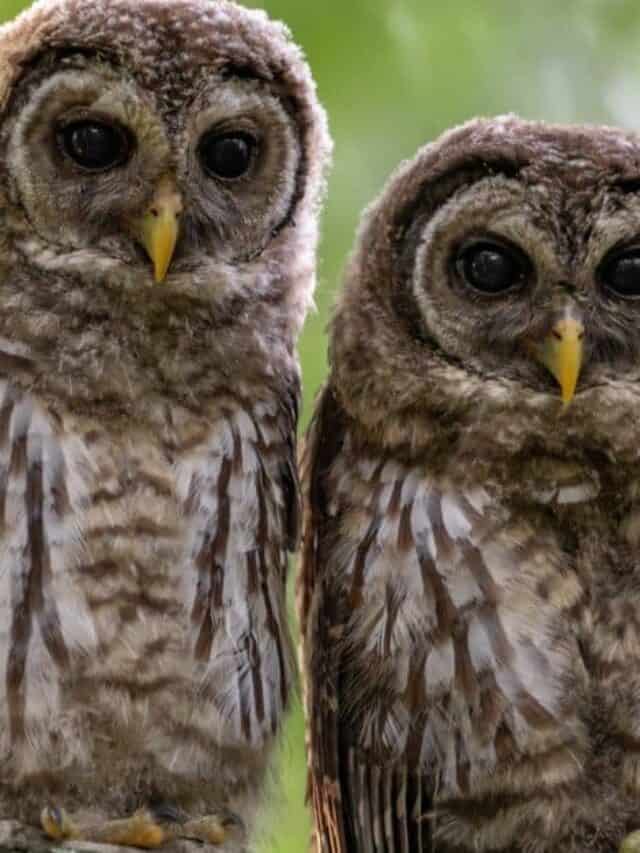
Barred owls may pass on their territory from one generation to the next
©iStock.com/Harry Collins
These owls mostly hunt at night, though now and then it can be seen hunting during the day. It is solitary and only lives with its mate and children until the fledglings are independent. Even though it is monogamous and mates for life, the couple only gets together to breed. During the rest of the year, each partner has their own home range.
The owls are territorial, and home territory size ranges from 675 to 3049 acres, though breeding territory size is a bit smaller. Barred owls don’t migrate unless food and shelter are scarce, and some territories have been in the same family of owls for generations. The owl claims its territory by flying from one perch to another and vocalizing. The territory size claimed by males is larger than that claimed by females.
Diet
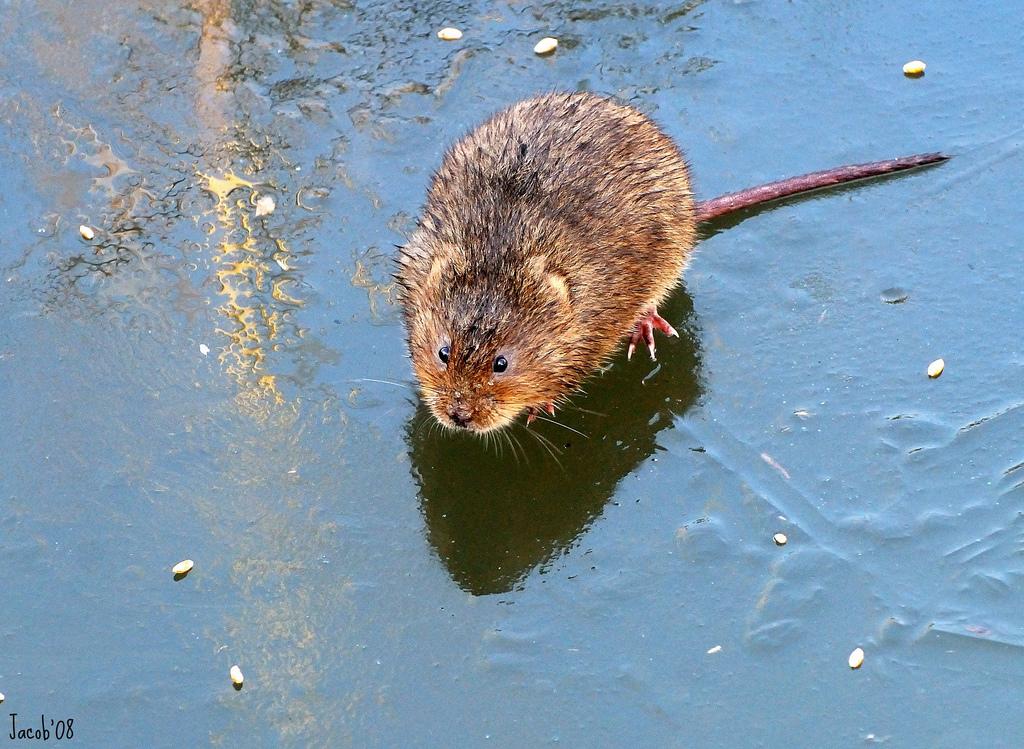
Barred owls consider voles to be rather tasty; the birds of pray also fish on occasion
These owl’s diet consists of any prey that it can subdue and swallow. The owl pounces on terrestrial prey such as voles but is agile enough to catch bats in mid-air. It will also raid nests and wade into shallow waters to grab fish and crayfish. The owl has also been seen eating roadkill. In the end, it discharges a pellet that contains fur, teeth, and anything else that its GI tract couldn’t digest.
Though the owl prefers to swallow its prey whole, if the creature is too big, it will eat the head and save the rest for later. Though a nest box can be helpful, humans should not attempt to feed wild owls because the owl will become used to being fed, which is dangerous for them.
Predators and Threats
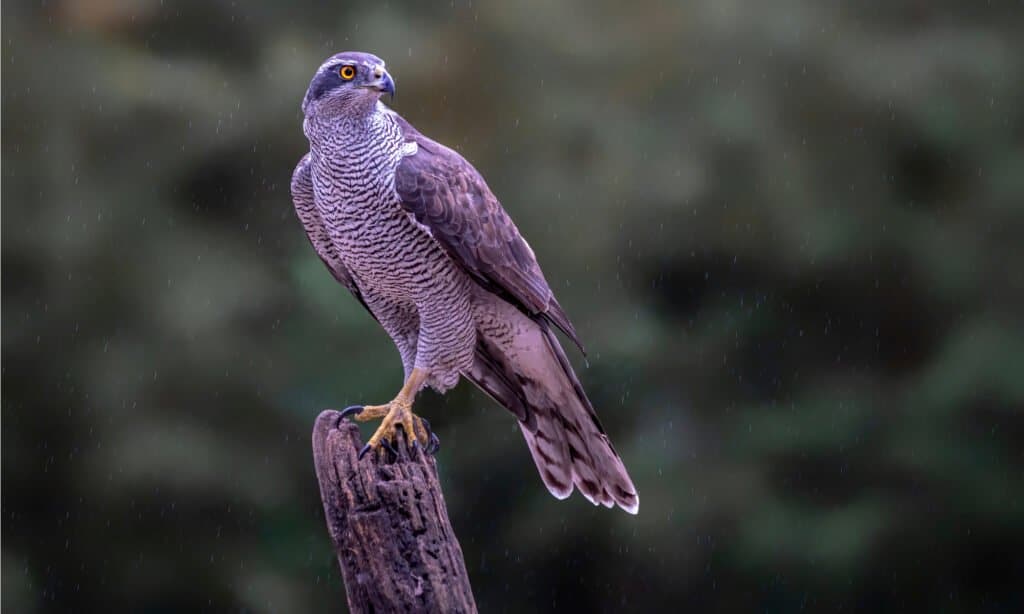
Goshawks enjoy hunting barred owls
©Albert Beukhof/Shutterstock.com
Though an efficient predator itself, the barred owl faces predation from a variety of sources. The great horned owl is its chief enemy, for it competes for territory with the barred owl. Northern goshawks also kill barred owls, and weasels and raccoons eat eggs and chicks. Barred owls are also run over by cars and killed in traps meant for other animals. Sometimes animals meant to be prey successfully defend themselves and kill the owl.
Diseases also take a toll on owls, especially baby owls. These diseases include West Nile Virus, avipoxivirus, cancers and aspergillosis. Parasites that cause toxoplasmosis and trichomoniasis also take their toll on barred owls.
Despite this, these owls often live a decade or more in the wild. The oldest barred owl on record lived 34 years and 1 month in captivity. The population is healthy, and the owl’s status on IUCN Red List is Least Concern.
Reproduction, Babies, and Lifespan

Barred owls care for their young for a total of six months
©iStock.com/passion4nature
Facts about barred owl reproduction are:
They usually mate in late winter after the male has courted the female with a display. After mating, the female retires to the nest where she lays an egg every two or three days. During this time, the male feeds her. The eggs are white, rough to the touch, and ovate, and only the female incubates them while the male continues to feed her. The eggs hatch at around 28 days. The babies are helpless but have white down that’s replaced by feathers after two or three weeks.
After the eggs hatch, the female broods the baby owls, or owlets for three weeks. Then, she joins her mate in hunting for the owlets. The baby owls can fly, more or less, when they are six weeks old and are independent when they’re six months old. They’re sexually mature when they’re two years old.
Population

Barred owls are increasing population-wise owing to favorable environmental conditions
©Jim Cumming/Shutterstock.com
These owls’ population is estimated to be about 3 million birds, and the population appears to be increasing as the owls expand their range. Some scientists believe this is due to fire suppression and the planting of trees.
View all 285 animals that start with BBarred Owl FAQs (Frequently Asked Questions)
How big is a barred owl?
A male barred owl is 18.9 inches long and weighs 1 to 1.8 pounds. A female is about 20 inches long and weighs 1.8 to 2 pounds.
What do barred owls eat?
Barred owls mostly eat small mammals but they will also take insects, earthworms, other birds, bats, reptiles, amphibians, and even aquatic animals.
What eats the barred owl?
Things that eat barred owls include northern goshawks, great horned owls, weasels, and raccoons.
Where do barred owls live?
Barred owls live in North America. Most live in the eastern part of the United States and Canada, but some live in the Pacific Northwest and Mexico.
Can a barred owl kill a human?
A barred owl probably can’t outright kill a human being, but its talons are formidable and an angry bird can deliver serious wounds. However, the barred owl is considered unusually peaceable for a bird of prey.
Will barred owls eat cats?
A grown cat may be a bit too big for a barred owl to handle. A newborn or weeks-old kitten might make a perfect meal, however.
What does seeing a barred owl mean?
In some cultures, the owl is a harbinger of death. In others, it is a symbol of wisdom.
Do barred owls come out during the day?
Barred owls are mostly nocturnal, but they will come out during the day. If someone plays the recording of a hoot of a barred owl during the day, for example, a live owl might respond to it.
What are the differences between a Barred owl and a Barn owl?
The key differences between Barred and Barn owls are appearance, size, and behavior. The main way to tell them apart is to look for the distinct white, heart-shaped face of the barn owl. But this is far from the only way to tell which is which.
Thank you for reading! Have some feedback for us? Contact the AZ Animals editorial team.
Sources
- Animal Diversity Web, Available here: https://animaldiversity.org/accounts/Strix_varia/
- All About Birds, Available here: https://www.allaboutbirds.org/guide/Barred_Owl/lifehistory#
- The Owl Pages, Available here: https://www.owlpages.com/owls/species.php?s=1740
- Kidzfeed, Available here: https://kidzfeed.com/what-do-owls-eat/

















